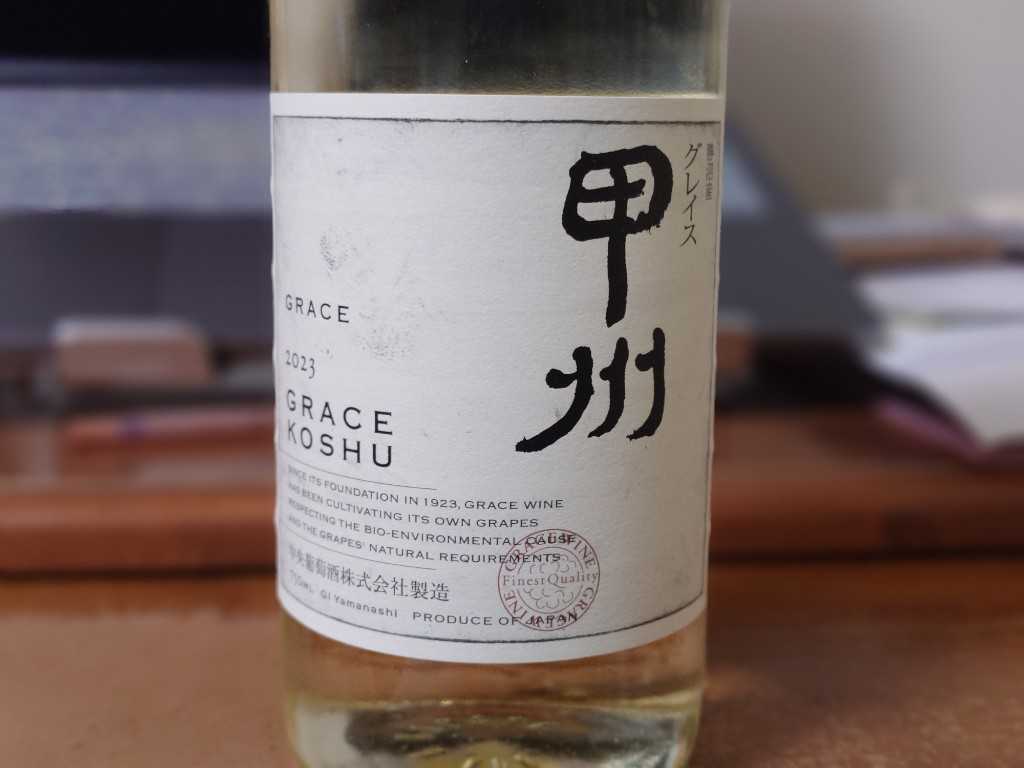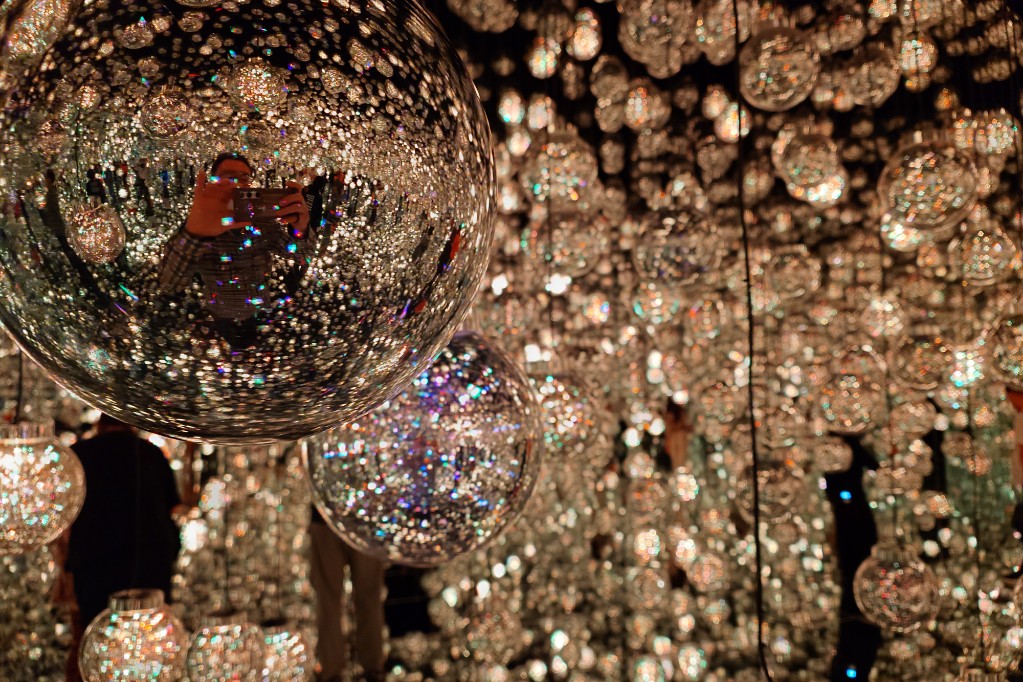テーマ: 今日のワイン(6133)
カテゴリ: 日本ワイン

口に含むと、前回飲んだ廉価版(茅ヶ岳)より明らかに果実味が厚く、芯の太い味わいだ。酸は縦に伸びるシャープさはなく、じんわりと広がる感じ。後半に少しばかりの苦味、えぐみが加わるが、これは欠点というより個性ととるべきだろう。よく物の本には、「爽やかな味わい」というような書かれ方をしているが、たとえばソーヴィニョンブランやイタリア、スペイン系白品種のような爽やかさではなく、もっとこう、しんみりした印象だ。それと、これは先入観なのかもしれないが、どことなく味わいや含み香の中に「吟醸香」的な要素も感じる。そういう意味では、間違いなく、オーソドックスな和食には合うワインだと思う。
ただ、この銘柄に関しては価格が問題だ。半官びいきで見ても、3K超えのプライスは割高だと思う。とはいえ、久しぶりに国産ワインへの興味が募ってきたので、秋が深まったら、2k台で買える甲州ブランドをいくつか試してみようと思う。
A very pale greenish-yellow hue, not often seen in European varieties. On the nose, it shows aromas of green citrus like sudachi or kabosu, along with white peach and grassy herbs.
On the palate, it’s clearly fuller and more substantial in fruit than the budget version I had last time (Kayagatake), with a firmer core of flavor. The acidity doesn’t cut sharply in a vertical line but rather spreads gently across the palate. A touch of bitterness and astringency comes in toward the finish, but this should be taken as character rather than a flaw.
Reference books often describe it as having a “refreshing taste,” but it’s not the same brightness you’d expect from Sauvignon Blanc or Italian and Spanish white varieties—it carries a quieter, more contemplative impression. Perhaps it’s just my bias, but I even detect something reminiscent of ginjō-ka (the fragrant note found in premium sake) in its flavors and lingering aromas. In that sense, it’s undoubtedly a wine that pairs beautifully with traditional Japanese cuisine.
That said, the issue with this label is the price. Even giving it the benefit of the doubt, anything over 3,000 yen feels a bit steep. Once autumn sets in, I plan to explore a few Kōshū wines in the 2,000-yen range instead.
お気に入りの記事を「いいね!」で応援しよう
[日本ワイン] カテゴリの最新記事
-
いろグラン甲州2024(まるき葡萄酒)Iro-g… 2025年10月31日
-
いろベーリーA2024(まるき葡萄酒)Iro-Be… 2025年10月27日
-
フジクレール・マスカットベリーA樽熟成20… 2025年10月14日
【毎日開催】
15記事にいいね!で1ポイント
10秒滞在
いいね!
--
/
--
PR
X
Comments
shuz1127
@ Re[1]:モーリス・ユトリロ展@SOMPO美術館~その1 Maurice Utrillo Exhibition at the SOMPO Museum — Part 1(11/10)
Henryさん おお、西山美術館に行かれたの…
Henry@ Re:モーリス・ユトリロ展@SOMPO美術館~その1 Maurice Utrillo Exhibition at the SOMPO Museum — Part 1(11/10)
西山美術館、メルカリで無料招待券をお安…
shuz1127
@ Re[1]:ほどよく均整の取れたベリーA~マスカットベリーA2023(白百合醸造) Well-Balanced Berry A – Muscat Bailey A 2023 (Shirayuri Winery)(10/10)
noir-funさんへ 熊本ワインファーム、例…
noir-fun
@ Re:ほどよく均整の取れたベリーA~マスカットベリーA2023(白百合醸造) Well-Balanced Berry A – Muscat Bailey A 2023 (Shirayuri Winery)(10/10)
機会があれば是非、熊本ワインファームの…
shuz@ Re[1]:悪くはないのだけど…エラスリス MAX・カベルネソーヴィニヨン2020 “Not bad, but not quite…” — Errazuriz MAX Cabernet Sauvignon 2020(09/24)
noir-funさん ご無沙汰していますが、お…
Category
カテゴリ未分類
(10)お知らせ・リンク集
(29)ワイン新着情報
(515)ワインコラム
(343)ワインコラム2(話飲徒然草拾遺集)
(75)ワインコラム3(RWGコラム拾遺集)
(28)都内近郊散策
(281)こんな店に行った
(326)B級グルメ・カフェ
(248)健康
(219)エッセイ
(76)ひとりごと・備忘録
(541)カミサン推薦ネタ
(28)語学・資格・学び直し
(95)山歩き・ハイキング
(123)アクアリウム・ガーデニング
(339)育児・教育
(88)PCネット時計カメラ
(129)音楽・オーディオ
(70)リフォーム引越し
(50)こんなワイン買った
(129)ボルドー
(99)ブルゴーニュ・ジュブレシャンベルタン
(90)ブルゴーニュ・モレサンドニ
(40)ブルゴーニュ・シャンボールミュジニー
(45)ブルゴーニュ・ヴォーヌロマネ・ヴジョ
(56)ブルゴーニュ・NSG
(58)ブルゴーニュ・その他コートドニュイ
(63)ブルゴーニュ・コルトン・ポマール・ヴォルネイ
(30)ブルゴーニュ・ボーヌ周辺
(56)ブル・ピュリニー・シャサーニュ・ムルソー
(21)ブルゴーニュ・その他コートドボーヌ
(27)ブルゴーニュ・裾モノイッキ飲み!
(221)ブルゴーニュ・その他地域
(37)ボジョレー再発見プロジェクト
(32)シャンパーニュ
(195)ロワール・アルザス・ローヌ
(54)その他フランス
(16)イタリア
(80)スペイン・ポルトガル
(37)ニュージーランド・オーストラリア
(49)USA
(40)安泡道場(シャンパーニュ以外)
(37)その他地域・甘口など
(43)日本ワイン
(64)ワイン会・有料試飲
(173) セシル・トランブレ…
 New!
mache2007さん
New!
mache2007さん
【wine】アルザスシ… New!
ささだあきらさん
New!
ささだあきらさん
貝殻亭でランチ zzz.santaさん
zzz.santaさん
EF210-328 EF510-3… musigny0209さん
グラムノン yonemuさん
yonemuさん
ジャン・ルイ・シャ… hirozeauxさん
hirozeauxさん
実南 月一会 ミユウミリウさん
ミユウミリウさん
ワイン&ジョギング … Char@diaryさん
道草日記 旅・釣… 道草.さん
鴨がワインしょって… うまいーちさん
 New!
mache2007さん
New!
mache2007さん【wine】アルザスシ…
 New!
ささだあきらさん
New!
ささだあきらさん貝殻亭でランチ
 zzz.santaさん
zzz.santaさんEF210-328 EF510-3… musigny0209さん
グラムノン
 yonemuさん
yonemuさんジャン・ルイ・シャ…
 hirozeauxさん
hirozeauxさん実南 月一会
 ミユウミリウさん
ミユウミリウさんワイン&ジョギング … Char@diaryさん
道草日記 旅・釣… 道草.さん
鴨がワインしょって… うまいーちさん
Keyword Search
▼キーワード検索
Calendar
© Rakuten Group, Inc.









